Do you have what you need to make your garden grow?


Garden Center
Store Hours
Mon-Sat:
6:00am - 10:00pm
Sun:
7:00am - 8:00pm
Curbside:
09:00am - 6:00pm
Location
Popular at Your Garden Center
Summer Garden Center Supplies
Popular Garden Center Live Plants
Garden Project Calculators
;Resize=(703,395.44))
Grass Seed Calculator
When you're ready to seed your lawn, our calculator helps you estimate the amount of grass seed you'll need to get the job done.
;Resize=(703,395.44))
Mulch Calculator
Enter your preferred material, the square footage and mulch depth of the coverage space for accurate results.
;Resize=(703,395.44))
Fencing Calculator
We'll calculate the amount of fencing you should purchase based on your property needs.
Shop Outdoor and Garden Brands
Frequently Asked Questions About Gardening
How can I treat weeds in my vegetable garden?
Weeds might start peeking through in the garden beds, even if you put down mulch or a landscape fabric liner to keep them at bay. Pull weeds from the root in edible flower or vegetable gardens, and dig up the roots if the weed snapped off without them. Be sure to get them before the weeds' flowers dry out and drop their seeds. If you'd like to treat weeds with weed killer, check that it's safe for pollinators and pets — and wear a respirator and heavy rubber gloves to ensure that it doesn't touch your skin or your lungs.
How do I fix yellow grass?
You'll need to rehydrate those roots. The solution for how to get burnt grass green again is easy: Fix the scorched spot with a good long drink, then continue to water it regularly. It should perk up within the next week. On the other hand, the method for how to treat grass from dog urine isn't as simple. Grass damaged by pets must be removed, neutralized, and replaced in fresh soil with new grass seed, sod or patch and repair grass seed.
When should I water my flowers?
If you can water during the early morning or in the evening, that's ideal. Watering when the sun is at its peak means a lot of the moisture will evaporate. This applies to whatever you're growing: lawns, gardens, and trees. Whenever you water, give all the plants a thorough drink, and don't skip it just because it's not the ideal time. The plants still need hydration, regardless of the time on the clock. Depending on your grass type, climate, and lawn health, you may also want to apply a lawn fertilizer.
Do my plants need fertilizer?
Once you've got your plants into pots or the ground, make sure they stay hydrated and well-fed. Choose an organic or synthetic fertilizer and give your garden a boost. You can even find one specially formulated for your plants, whether you need a vegetable fertilizer, fruit tree fertilizer, succulent plant food, or a general garden fertilizer. Avoid applying more often than recommended. Always water immediately after, as directed, so the plants won't be burned by the fertilizer.
How can I keep cool this summer?
When you need a break from working in the yard, shelter beneath a patio umbrella or covered gazebo. If you have sturdy structures like a shed or house, make your own shade by attaching awnings and shade sails. But sometimes shade isn't enough because it's just too humid out. That's when a patio mister or misting fan can help cool the air and turn an uncomfortable afternoon into a refreshingly relaxing day. Return to lounging in the sun when that chilled air is ready.
Can I do a quick patio makeover before entertaining?
Spending time with friends in gorgeous weather makes the season even more special. But you don't need to do a full backyard makeover or create your own patio conversation sets from scratch to do it. Even a minor backyard refresh can make a big difference. New outdoor lounge furniture, rugs, or even outdoor string lights can breathe new life into a backyard space.
Garden Project Ideas

Protect wood from carpenter bees with our guide on sealing surfaces, using traps, and applying safe pest control methods.

Check out our tips on banishing gnats indoors and out using traps, sprays, and moisture control to keep your home pest-free.

Safely remove poison ivy with our guide on protective gear, cutting techniques, and herbicide use for effective eradication.

Maintain a healthy lawn using organic methods like manual weeding, natural herbicides, and proper lawn care practices.

Grow apples successfully with our guide on choosing varieties, planting, pruning, and pest control for a bountiful harvest.

Cultivate thriving grapes with our step-by-step tips on site selection, trellising, pruning, and disease prevention.
The Home Depot Garden Center at E Kennewick
Celebrate Summertime Gardening
As summer stretches on, your garden and landscaping will weather more sun and heat than earlier in the season. That means you'll need to consider how to keep things cool with shade, irrigation, and proper tending. Just like we can get sunburned, plants can dry out, grass can get scorched, and trees can lose their leaves prematurely. We've got advice to help you, your lawn, and your garden make it through the hotter months with flying colors.
Keep Your Lawn Tidy
As the weeks tick by, the grass seed or sod you planted will grow taller than what's ideal. You'll need to maintain it so it'll look fresh and manicured again. Keep the lawn in check with a lawn mower and a string trimmer to knock down any tall grass around fences, buildings, or sidewalks.
Bushes, trees, and shrubs climb toward the sun and lose their shape over time. In the summer, they'll be growing fast, filled with buds and blooms before you know it. Prune them to show off their beauty with garden shears and hedge trimmers. It's best to leave major tree maintenance and tree topping to the pros, but you may want to use a pole saw for minor trims and a chainsaw for small trees and bushes.
Watch Your Garden Thrive
Much of your garden's upkeep comes down to balancing sun and water. You'll need both to keep plants growing and flowering. A general rule when watering plants and flowers is to water the roots. A garden hose, sprinkler or sprinkler system, or drip irrigation system can get the job done. You don't need to water the blooms themselves. Many flowers wilt and droop when they get wet, but they’ll recover once they dry off. Succulents are, of course, the exception to basic watering rules, so look up your specific types of succulents to optimize their care.
In addition to watering, keep an eye on the nutrients your plants are getting. Apply fertilizer as recommended. We've even got fertilizers to match the types of plants you're growing so they'll absorb the right nutrients.
Grow Your Own Herbs
Get fresh flavors to spice up your mealtimes and accent your homegrown produce with herb gardening. They're generally low-maintenance and grow easily in pots, both indoors and outdoors. If you grow herbs outdoors, stick to heat-loving herbs that'll endure the summer temperatures, and consider a hanging herb garden.
Planting herbs in the ground can be tricky, as many of them — especially mint — are invasive and will take over your lawn. Avoid a yard of volunteer herbs when you just keep them in small plant pots on a sunny porch, window sill, or even in wall planters. Herbs also work as a hydroponic garden, which means they don't grow in soil. Instead, they grow in a mixture of rock chips, perlite, or sand.
Vines as Decorative Shade
Set up vines to climb an arched arbor or trellis to provide both beauty and shade. Vine plants that are native to your area are a good choice for success and attract pollinators. Wisteria, jasmine, and ivy are common options for creating a stunning archway or pathway. Remember to match your vine plants to how much sunlight you receive, as some like full sun and others don't. As a bonus, many vines put out sweet-smelling flowers with a delightful fragrance you can enjoy as you cool off in the shade.
Find Your Summertime Supplies Today
No matter if your perfect summer includes gardening, relaxing, or finishing those outdoor DIY projects, we've got the supplies you need to keep your days flowing with ease. Make the most of lengthy evenings and early mornings to enjoy all the season has to offer. Shop online, on our app anywhere you like, or in the aisles of your E Kennewick Garden Center.
Nearby Stores
Find Another Store
2855 Duportail Street
Richland, WA 99352
8.17 mi
Mon-Sat: 6:00am - 10:00pm
Sun: 7:00am - 8:00pm
300 W Harper Road
Hermiston, OR 97838
23.67 mi
Mon-Sat: 7:00am - 9:00pm
Sun: 8:00am - 8:00pm
1100 Ne C St
College Place, WA 99324
39.43 mi
Mon-Sat: 6:00am - 10:00pm
Sun: 7:00am - 8:00pm
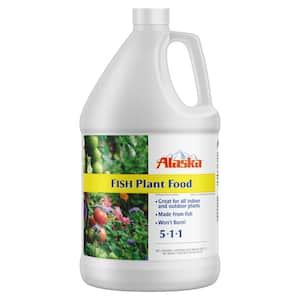
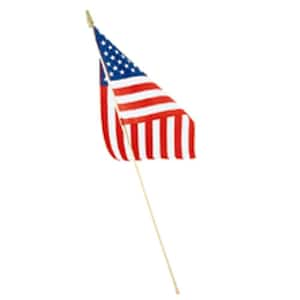
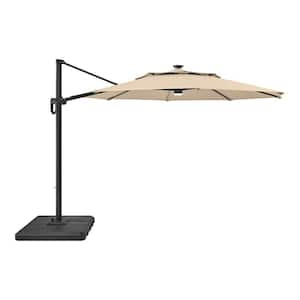
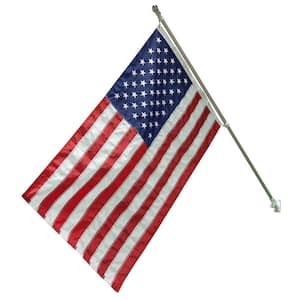
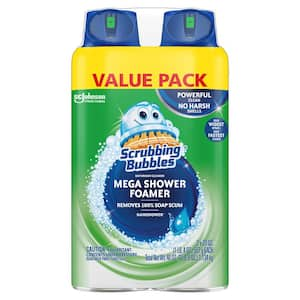
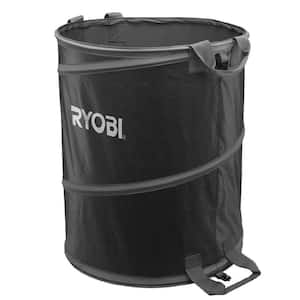
)
)
;Resize=(300,300))
/17_514245_S_012_Product%20Image%20(square).jpg?im=Resize=(300,300))
)
/2023_P2_Rain_Barrels_Product%20Image%20(square).jpg?im=Resize=(300,300))
;Resize=(300,300))
;Resize=(300,300))
)
)
;Resize=(300,300))
)
)
)
)
;Resize=(300,300))
;Resize=(300,300))
)
)
)
;Resize=(300,300))
;Resize=(300,300))
)
;Resize=(300,300))
;Resize=(300,300))
)
/12_SOIL_B_0420_Social%20media%20(square).jpg?im=Resize=(300,300))
;Resize=(300,300))
;Resize=(300,300))
;Resize=(300,300))
)
;Resize=(300,300))
)
;Resize=(300,300))
;Resize=(300,300))
/18Patio_Camden_Seagrass_5pcSeating_Planters_302468736_DTL3_L_Social%20media%20(square).jpg?im=Resize=(300,300))
;Resize=(300,300))
)
;Resize=(300,300))
;Resize=(300,300))
)
)
.jpeg?im=Crop,rect=(363.69230769230774,1.2307692307692308,958.7692307692308,958.7692307692308);Resize=(300,300))
;Resize=(300,300))
)
)
)
;Resize=(300,300))
;Resize=(300,300))
)
;Resize=(300,300))
)
)
;Resize=(300,300))
)
;Resize=(300,300))
)
;Resize=(300,300))
;Resize=(300,300))
)
)
)
;Resize=(300,300))
;Resize=(300,300))
/Dorado_Tropical_Combo_14in_Product%20Image%20(square).jpg?im=Resize=(300,300))
;Resize=(300,300))
/2023_2_Cactus_Plants_Product%20Image%20(square).jpg?im=Resize=(300,300))






































